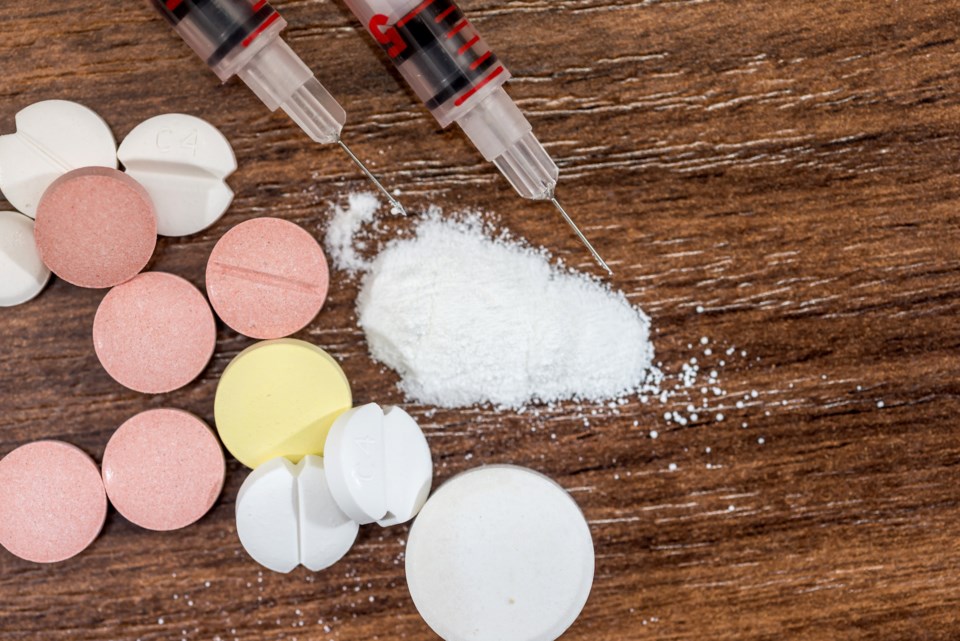Operation Last Mile is a year-long effort conducted by the Drug Enforcement Association Rocky Mountain Field Division to target drug operations in local communities.
According to the DEA, the Sinaloa and Jalisco cartels are affiliated with fentanyl and methamphetamine distribution in the U.S. These cartels use social media, violent street gangs, criminal organizations and individuals to complete the final steps of drug transactions.
“These local ties are what helps the cartels flood communities with fentanyl and methamphetamine,” a news release from the DEA stated.
Over the last year, law enforcement officers nationally arrested 3,337 people, seized 44 million fentanyl pills and 6,500 pounds of fentanyl powder. It also confiscated 91,000 pounds of methamphetamine, 8,497 firearms and more than $100 million, according to the news release.
In the Rocky Mountain Field Division, the numbers were just as alarming with 375,000 fentanyl pills and 25 pounds of fentanyl powder being removed from local communities. Additionally, 126 pounds of methamphetamine, more than 100 guns and $1.8 million in assets were seized and 65 arrests were made.
The U.S. DEA also reported that more than 1,100 cases — 32 in the Rocky Mountain area — involved social media applications and encrypted communications platforms, including Facebook, Instagram, TikTok, Snapchat, WhatsApp, Telegram, Signal, Wire and Wickr.
“The Sinaloa and Jalisco Cartels use multi-city distribution networks, violent local street gangs, and individual dealers across the United States to flood American communities with fentanyl and methamphetamine, drive addiction, fuel violence, and kill Americans,” said DEA Administrator Anne Milgram. “What is also alarming — American social media platforms are the means by which they do so. The Cartels use social media and encrypted platforms to run their operations and reach out to victims, and when their product kills Americans, they simply move on to try to victimize the millions of other Americans who are social media users.”
DEA urges the public to be vigilant about fentanyl and the deadly threat it poses:
- Fentanyl is a synthetic opioid that is approximately 50 times more potent than heroin and 100 times more potent than morphine. Just two milligrams—the equivalent of a few grains of salt—can kill a person.
- Fentanyl comes in two forms: pills and powder. The Sinaloa and Jalisco cartels are hiding fentanyl in fake pills that look like oxycodone, Xanax and Percocet. The cartels are also mixing fentanyl powder in with cocaine, heroin, and methamphetamine. This is why many of the people poisoned by fentanyl had no idea they were even taking it.
- The cartels and their members and associates are using social media applications — including Facebook, Instagram, TikTok and Snapchat — and encrypted platforms — including WhatsApp, Telegram, Signal, Wire and Wickr — to sell pills and powders that are advertised as something else but actually have fentanyl inside.
“Fentanyl is the greatest threat to Americans today. It kills more Americans between the ages of 18 to 45 than terrorism, than car accidents, than cancer, than COVID. It kills nearly 200 Americans every day. And the number of children under 14 dying from fentanyl poisoning has increased at an alarming rate,” Milgram said. “The two drug cartels responsible for bringing fentanyl into the United States — the Sinaloa and Jalisco cartels — are intentionally driving addiction by selling fake pills and hiding fentanyl in other drugs, and they are reaching our kids through using social media platforms. I encourage you to use this day to talk to your families about the dangers of fentanyl and have an important conversation with your kids about who they are communicating with on social media.”



